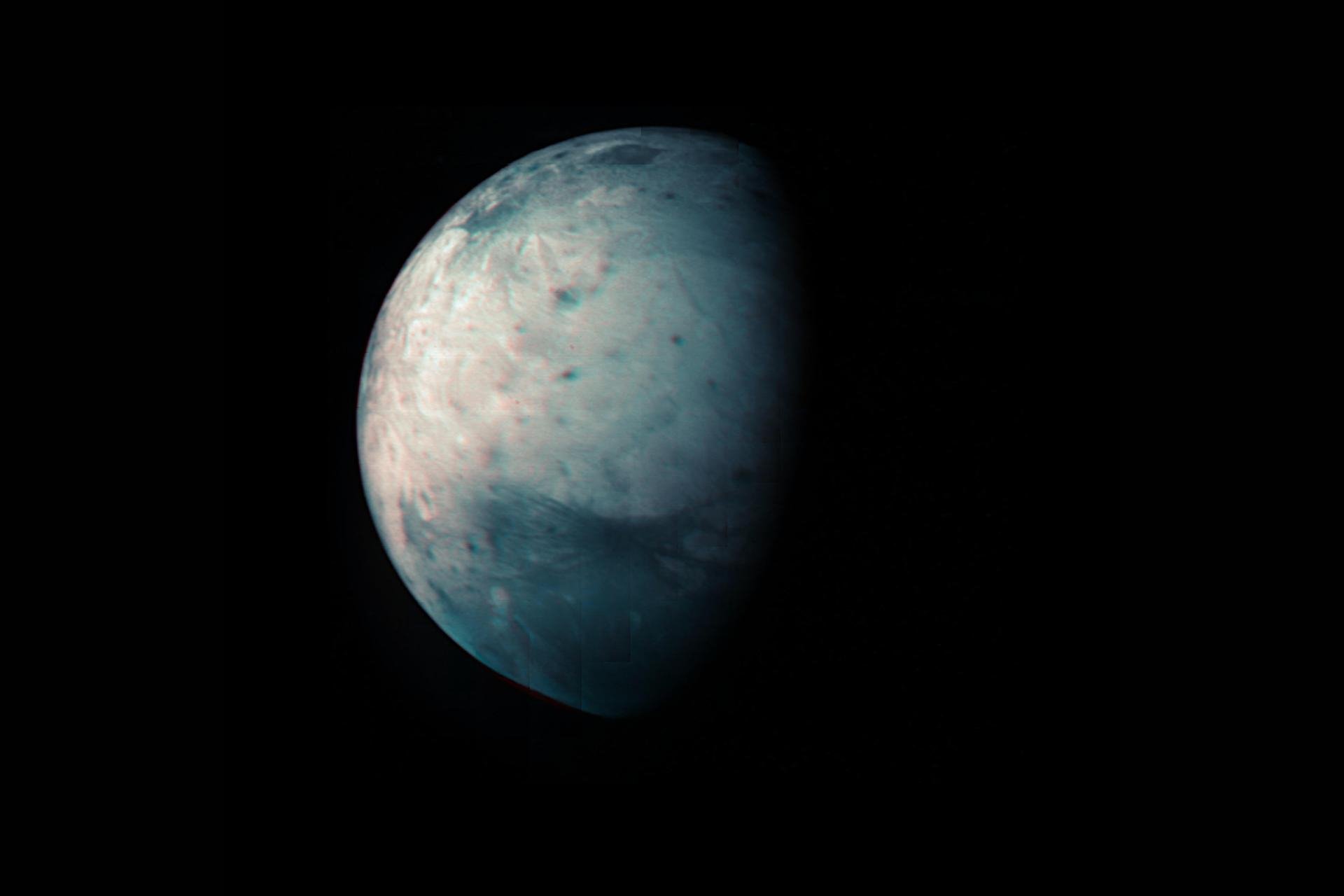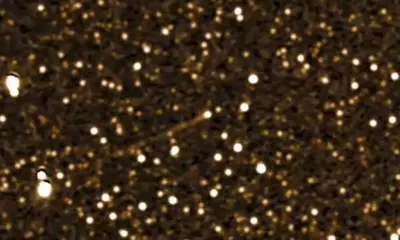Science
Physicist Proposes Ganymede as a Major Dark Matter Detector

A physicist has proposed an innovative plan to utilize Ganymede, Jupiter’s largest moon, as a colossal detector for dark matter. This ambitious project aims to enhance the search for the elusive substance that is believed to make up approximately 85% of the universe. Dark matter is termed “dark” because it does not emit light and interacts very weakly with regular matter, making it incredibly difficult to observe.
William DeRocco, a physicist at the University of Maryland, submitted a preprint to arXiv outlining his vision of using Ganymede’s craters to potentially capture evidence of dark matter particles. According to DeRocco’s proposal, spacecraft like NASA’s Europa Clipper and ESA’s JUICE could investigate these craters during their upcoming missions.
The paper suggests that large dark matter particles may have impacted Ganymede’s thick icy crust, causing significant surface disruptions. Unlike the smaller dark matter candidates typically detected on Earth, these larger particles could have created “dark matter craters,” which would manifest as unique surface features where deep-seated minerals from Ganymede’s oceans are exposed.
In an interview with New Scientist, DeRocco elaborated on his hypothesis: “If you used something like ground-penetrating radar, you might be able to see this column of melted ice going all the way down through the ice.” This technique could reveal critical insights into the composition and behavior of dark matter.
The prospect of studying Ganymede’s surface through this lens has garnered interest in the scientific community. Bradley Kavanaugh, an astrophysicist at the University of Cantabria in Spain, acknowledged the potential of the proposal, despite the absence of definitive evidence for such massive dark matter particles. He emphasized that exploring unconventional ideas is often essential in physics, particularly when addressing profound mysteries.
While the scientific community remains cautious, DeRocco’s approach invites a fresh perspective on the search for dark matter. His bold proposal encourages a reconsideration of how scientists might detect this enigmatic substance, even if it challenges conventional methods.
The scientific community will be watching closely to see if NASA or ESA decide to incorporate DeRocco’s idea into their mission plans. Whether or not Ganymede indeed bears the marks of dark matter craters remains an open question, but the exploration of this possibility marks a significant step in the ongoing quest to understand the universe’s fundamental components.
-

 Technology5 months ago
Technology5 months agoDiscover the Top 10 Calorie Counting Apps of 2025
-

 Health3 months ago
Health3 months agoBella Hadid Shares Health Update After Treatment for Lyme Disease
-

 Health3 months ago
Health3 months agoErin Bates Shares Recovery Update Following Sepsis Complications
-

 Technology4 months ago
Technology4 months agoDiscover How to Reverse Image Search Using ChatGPT Effortlessly
-

 Technology1 month ago
Technology1 month agoDiscover 2025’s Top GPUs for Exceptional 4K Gaming Performance
-

 Technology3 months ago
Technology3 months agoElectric Moto Influencer Surronster Arrested in Tijuana
-

 Technology5 months ago
Technology5 months agoMeta Initiates $60B AI Data Center Expansion, Starting in Ohio
-

 Technology5 months ago
Technology5 months agoRecovering a Suspended TikTok Account: A Step-by-Step Guide
-

 Health5 months ago
Health5 months agoTested: Rab Firewall Mountain Jacket Survives Harsh Conditions
-

 Lifestyle5 months ago
Lifestyle5 months agoBelton Family Reunites After Daughter Survives Hill Country Floods
-

 Health3 months ago
Health3 months agoAnalysts Project Stronger Growth for Apple’s iPhone 17 Lineup
-

 Technology4 months ago
Technology4 months agoHarmonic Launches AI Chatbot App to Transform Mathematical Reasoning





















